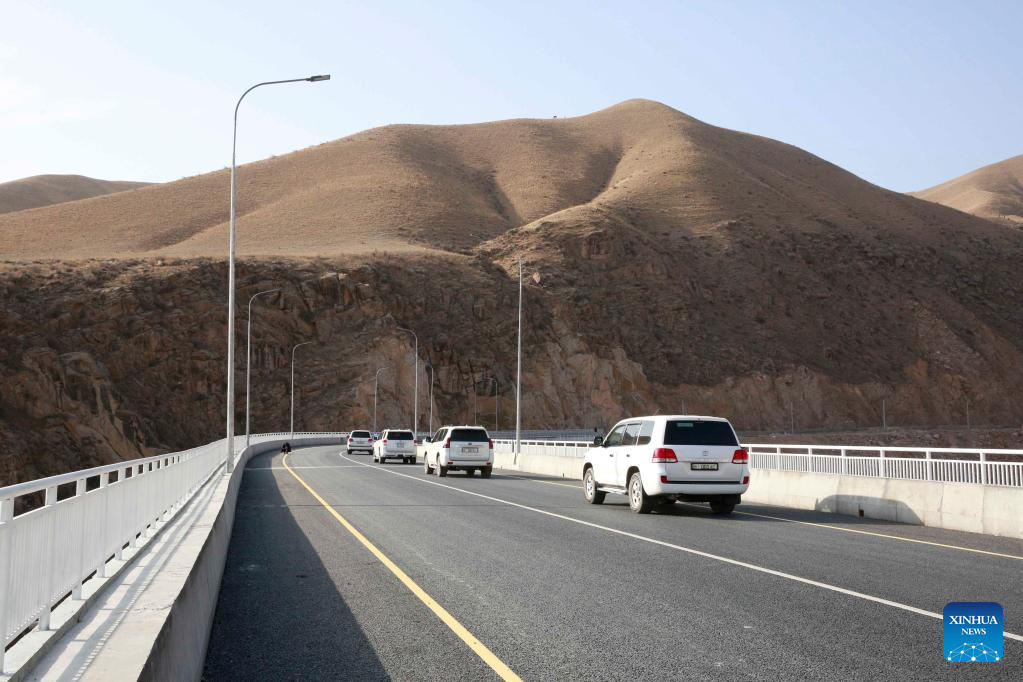
A view of the southeast corner of the ancient city wall in Xian, northwest China's Shaanxi Province, April 19, 2023. [Photo/Xinhua]
By Yaroslav Lissovolik
The world economy is increasingly shifting into a different growth mode with South-South cooperation becoming particularly prominent in driving the performance of the global economy. Some of the events in recent years that highlighted this trend were the notable acceleration in South-South trade and investment, a rising number of countries aiming to join BRICS, the expansion in the membership of the BRICS New Development Bank, and the rising number of countries joining the Belt and Road Initiative (BRI).
In this respect the first China-Central Asia Summit in Xian, Northwest China's Shaanxi Province, continues and reinforces these trends of upward momentum in South-South cooperation. This China-Central Asia nexus of South-South cooperation is proving to be especially important in advancing connectivity in the Eurasian region and raising the regional trade and growth potential.
In the sphere of trade cooperation, China and the economies of Central Asia have been making important headway in recent periods. In particular, in 2022, trade turnover between China and the Central Asian countries increased by 31.9 percent and exceeded $32 billion. The growth in trade turnover between China and the Central Asia region's largest economy Kazakhstan was more than 34 percent in 2022, with the total trade turnover exceeded $24 billion.
In view of this positive upward momentum in bilateral economic cooperation, Kazakh Prime Minister Alikhan Smailov has declared Kazakhstan's readiness to work towards achieving the goal set by both countries' presidents to increase bilateral trade turnover to $35 billion by the year 2030.
The main gateway through which China is advancing its economic cooperation with the economies of Eurasia, most notably with Central Asian economies, is through the BRI. One of the key areas of economic cooperation within the BRI framework is transportation connectivity and such a focus renders this platform particularly important for Central Asia.
This is because all Central Asian economies are land-locked and rely on economic integration and greater connectivity to surmount the limitations of distance and geographical separation from key regional and global logistical centers.
In fact, the scale of the limitations of geography for Central Asia is in some ways unprecedented and calls for particular emphasis in economic cooperation with the outside world to be placed on connectivity projects. In particular, Kazakhstan is the largest land-locked economy in the world. Uzbekistan is one of the very few economies in the world to be separated from coastal lines by several countries. Kyrgyzstan and Tajikistan are among the land-locked economies with some of the highest elevations.
Given the high investment needs for connectivity in Central Asia, it is no wonder that transportation is one of the leading sectors in terms of China's investment in regional economies such as Kazakhstan – by September 2022, China's investments in Kazakh transportation and storage reached nearly $3 billion, followed by the processing industry ($2.7 billion), and construction ($2 billion).

Vehicles run on a bridge of the second phase of the north-south highway built by China in Kyrgyzstan, November 10, 2021. [Photo/Xinhua]
The BRI investment directed towards building transportation connectivity is already having palpable economic effects in Central Asian economies such as Uzbekistan. Using the BRI as a gateway into Eurasia, Uzbekistan's producers are expanding their capabilities of connecting not only to China, but also to Iran, the economies of the European Union, India, Turkiye and many others.
According to existing estimates, "the BRI improvements in transport infrastructure are estimated to reduce Uzbek shipment time by almost 15 percent, the largest reduction among BRI countries. Falling shipment time will in turn raise Uzbekistan's exports by between 13 percent and 23 percent."
Another platform that is likely to gain prominence in the economic cooperation between China and Central Asia is "BRICS Plus" cooperation. Tajikistan was the first of the Central Asian economies to participate in the ninth BRICS Summit in 2017 conducted by China during its BRICS chairmanship. This was followed by the participation of Kazakhstan in the 14th BRICS Summit in 2022 when China expanded the BRICS Plus format during its BRICS presidency.
Going forward, there may be scope for more Central Asian economies to become part of the BRICS Plus dialogue. A related track that may be promising for the Central Asian economies is membership in the BRICS New Development Bank which should provide additional resources for such development goals as energy-efficiency, attainment of higher environmental standards, and growth in digital connectivity.
Overall, the China-Central Asia economic cooperation is "win-win" cooperation – the Central Asian economies are advancing the attainment of key development goals as well as building greater connectivity ties regionally and globally. At the same time, China is creating favorable regional conditions in Eurasia for economic growth and trade expansion – something that is likely to benefit its own growth performance in the longer term. This is the framework of balanced economic cooperation that needs to underpin the rise of the Global South in the world economy in the coming decades.
Yaroslav Lissovolik, founder of "BRICS+ Analytics," is a member of the Russian International Affairs Council (RIAC).

 中文
中文



